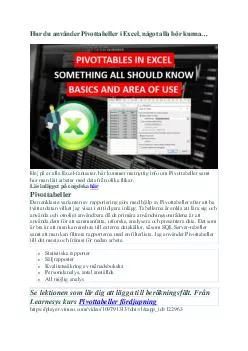PPT-MS EXCEL PART 4 Financial Functions
Author : sherrill-nordquist | Published Date : 2018-11-04
To illustrate Excels most popular financial functions we consider a loan with monthly payments an annual interest rate of 6 a 20year duration a present value
Presentation Embed Code
Download Presentation
Download Presentation The PPT/PDF document "MS EXCEL PART 4 Financial Functions" is the property of its rightful owner. Permission is granted to download and print the materials on this website for personal, non-commercial use only, and to display it on your personal computer provided you do not modify the materials and that you retain all copyright notices contained in the materials. By downloading content from our website, you accept the terms of this agreement.
MS EXCEL PART 4 Financial Functions: Transcript
Download Rules Of Document
"MS EXCEL PART 4 Financial Functions"The content belongs to its owner. You may download and print it for personal use, without modification, and keep all copyright notices. By downloading, you agree to these terms.
Related Documents













